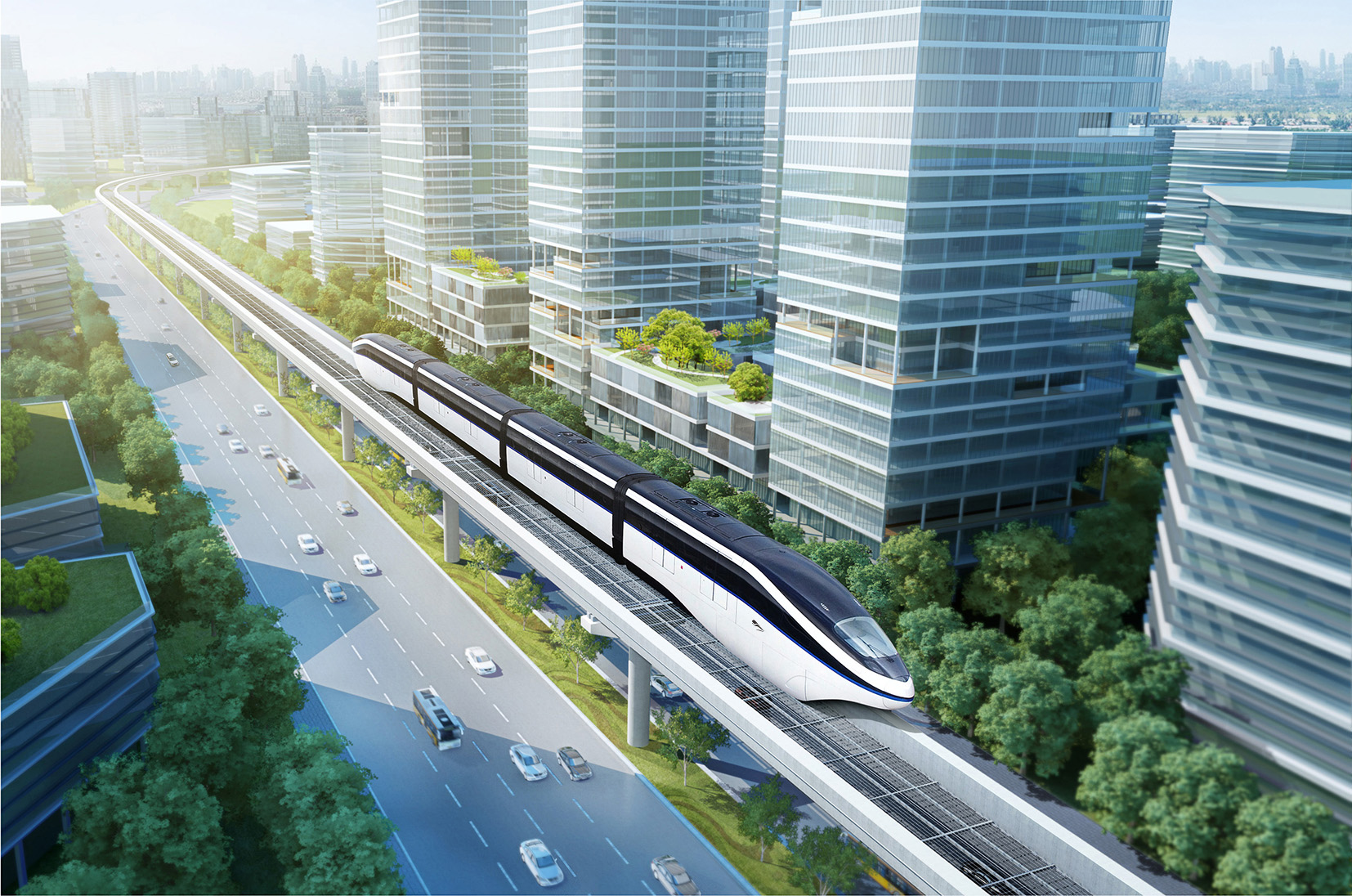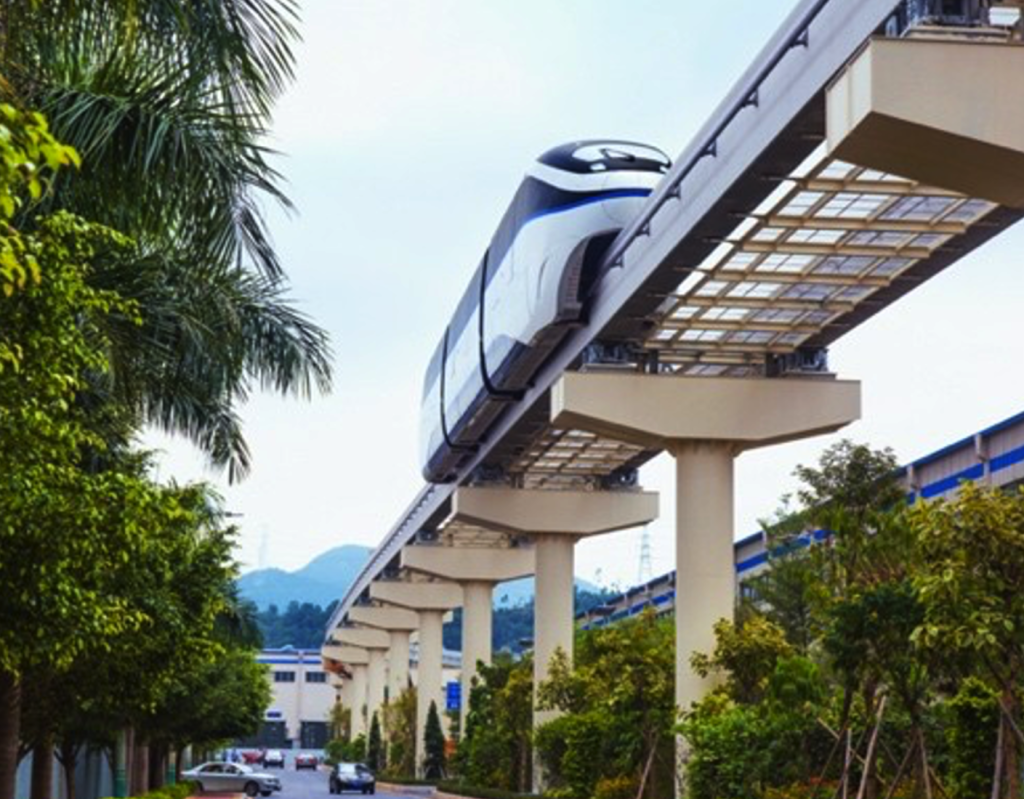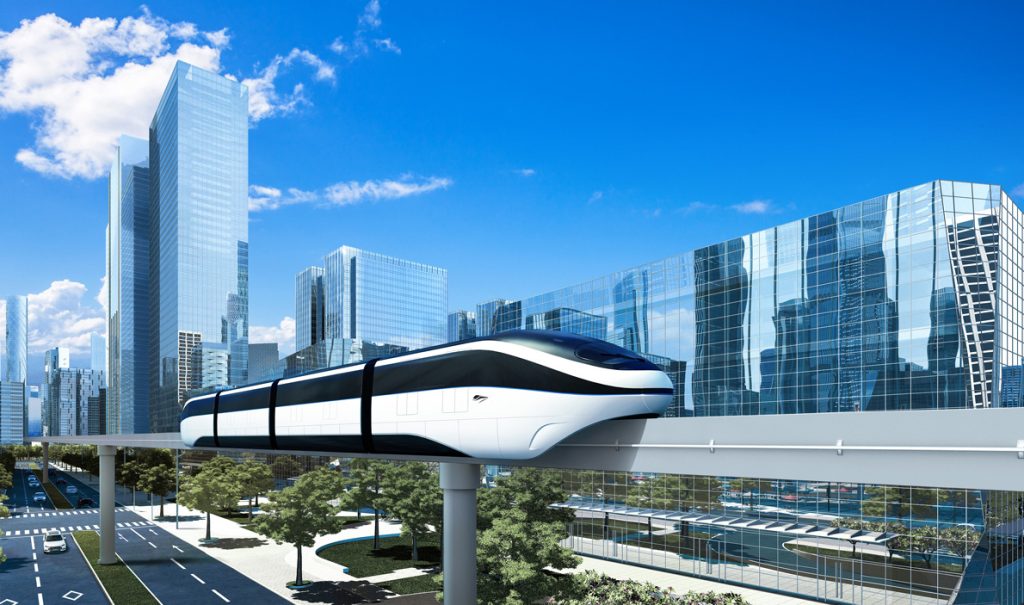
Look Up towards the Future
SkyRail technology is being advanced around the world
The type of mass transit that SkyRail represents is a preferred transit option across the globe – from Germany, England, Italy, Singapore, Japan, China, Australia, Brazil, and locally in Seattle, Las Vegas and New Jersey to countless other successful systems. Currently there are 42 cities around the world totaling 269 miles, with over 400 stations carrying millions of passengers each day. SkyRail is far lighter, less costly, faster/easier to construct than comparable elevated structures required by traditional rail vehicles – increasing mobility options for a more sustainable future.


Urban rapid transit solution
SkyRail is the most modern and state-of-the-art transit technology intended for dense urban environment. SkyRail is the world’s most advanced driverless, straddle-type monorail system, representing the state-of-the-art monorail technology that has evolved over nearly 60 years from an amusement park ride to a service proven, high-capacity, sustainable, urban rapid transit solution — a technology family that has become the new system of choice in several of the world’s largest modern cities, including São Paulo, Bangkok, Cairo, Tokyo and Chongqing, all of which already had Heavy Rail Transit (HRT).
Look up the benefits of SkyRail
SkyRail operates with more energy efficiency than any other form of other rail alternatives.
- Trains are roughly 30% lighter, resulting in less energy needed to propel the SkyRail.
- SkyRail alternatives include containerized, rechargeable, long-life batteries configured in energy storage facilities that are highly safe & efficient in capturing the energy generated by the electric motors when trains decelerate. Studies have estimated that this factor alone can reduce energy consumption by up to 30%.
- Trains are streamlined and thereby create less wind resistance.
- The structures are lighter, and their simple design elegance requires far less resources and energy to construct – and to maintain. Therefore, the lifecycle energy demand is compellingly lower
SkyRail is a rubber-tired straddle-type monorail that has substantially less emitted noise & vibration than any steel-wheeled guided transit technology. Furthermore, the vehicles are equipped with side skirts that cover the tires, which further reduce noise emissions.
SkyRail vehicles are roughly 30% lighter per foot as compared to the typical heavy rail transit subway cars. SkyRail vehicles use much lighter weight structural frames than traditional rail vehicles. This is because the traditional rail vehicle frames must support the very heavy “trucks, or bogies” that contain the steel wheels and electric motors. To the contrary, SkyRail vehicles typically are much lower profile because they actually do “straddle” the guide beams, and because they do not require those large and very heavy bogies. There is also no need for heavy steel tracks needed for other traditional guided transit systems. SkyRail structural engineers estimate that the monorail structure requires roughly half the concrete and steel. This then translates to further cost, and environmental benefits not possible by non-monorail transit systems.
SkyRail is designed for high-speed and high-capacity transportation, making it an efficient solution for addressing urban traffic congestion. In terms of speed, SkyRail can reach speeds of up to 80 miles per hour (128 kilometers per hour) depending on the configuration.
In terms of capacity, SkyRail vehicles have a capacity ranging from 10 to 50 passengers for each car, depending on the size of the car and the number of cars in a train set. This means that SkyRail has the potential to move a large number of people at any given time.
When compared to other modes of transportation, SkyRail offers several advantages. For example, when compared to traditional Rail systems, SkyRail has a smaller footprint due to its elevated guideways. This reduces the need for land acquisition and provides flexibility in designing the alignment of the guideway. Additionally, SkyRail is a fully integrated, driverless system, which reduces the need for staffing and minimizes the risk of human error.
Compared to other modes such as buses and trams, SkyRail has a higher capacity and can travel faster due to its elevated guideway design, which eliminates the need to stop for intersections and road traffic.